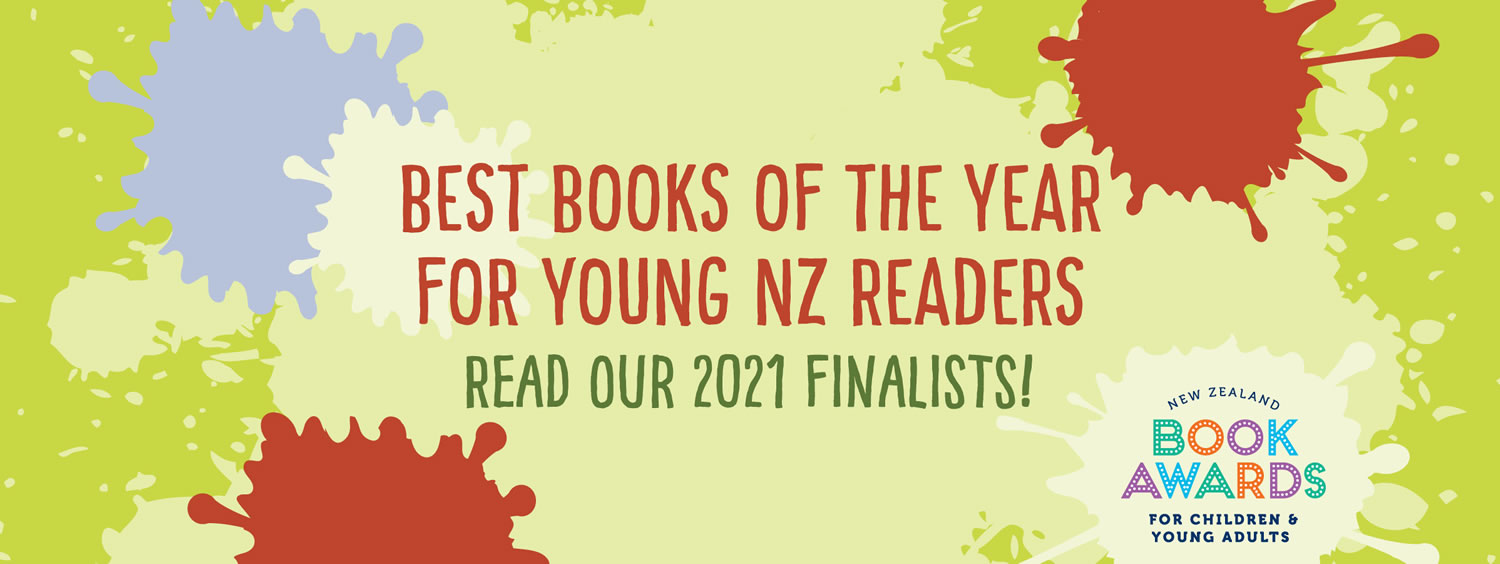Maximising the benefits of beautiful books
Published on Tuesday, 10 August 2021
Last updated on Monday, 09 August 2021

The books children enjoy in early childhood stay with them for life.
Interesting words, pictures, characters and storylines help to build literacy skills and open up new perspectives and understandings, and educators are always on the look-out for inspiring reads and interactive ways of sharing the written word.
To help them, the New Zealand Book Awards for Children and Young Adults highlights the very best books for youngsters, and provides teaching resources to support kids’ active involvement in reading, writing and illustration.
The winners of the 2021 Awards are being announced today, tomorrow 11 August and this week, we’re focusing on the Picture Book Award finalists and sharing ways for educators to engage and excite early readers.
Which titles have been shortlisted for the Picture Book Award?
There’s diversity and depth in all six Award categories, with authors bringing big themes, issues and feelings to the printed page and giving credit to young readers’ emotional intelligence.
When it comes to very young readers (and listeners), the judges say the Picture Book Award finalists, ‘Beautifully combine delicate illustrations that connect to and enhance sometimes delicate themes. There are laughs, tears, sighs (both contented and wistful) to be had in equal measure,’ and the finalists are:
- Hare & Ruru: A Quiet Moment by Laura Shallcrass
Emotions and mindfulness go to the heart of this beautiful tale about Hare, an anxious little animal who sets off on a journey to find peace, quiet and stillness – with some help from a feathered friend.
This gorgeous book is also in the running for the Russell Clark Award for Illustration and Best First Book Award. - Hound the Detective by Kimberly Andrews
This interactive, rhyming whodunnit invites young detectives (aka children) to look for clues in its pages and help Hound the detective dog solve the riddle. It’s easy to spy the action on every page, but can mini-sleuths guess the surprise ending? - Kōwhai and the Giants by Kate Parker
This fable is imbued with the wonder of nature, and it follows a forest-dweller called Kōwhai as she discovers a little seed’s hope to build a great forest. Children are encouraged to plant native seeds that will grow into Giants, and listen to nature with all their senses, to discover Kōwhai’s call. - The Hug Blanket written by Chris Gurney and illustrated by Lael Chisholm
This touching tale explains grief in a beautiful way, with knitted creations and colourful memories helping little ones understand the love and loss of a grandparent. There’s comfort to be found in simple things, and readers learn that it’s ok to feel sad when a grandchild-grandparent bond is broken. - This Is Where I Stand written by Philippa Werry and illustrated by Kieran Rynhart
This picture book tells the ANZAC story through the eyes (and memories) of a World War I statute. Thoughtful words and haunting illustrations combine to create a moving book that can be shared by young and old, at home and in the early childhood education (ECE) setting.
14 ways for educators to inspire early readers
Different discussions, imaginings and understandings can spring from the pages of different books, and in the ECE environment, there are lots of ways for educators to actively involve little ones in literature.
As a starting point, the NZ Book Awards says educators can do the following things to build information skills; encourage children to read, write and illustrate; and connect early learners with writers and books.
Educators can:
- Make a game of identifying characters in children’s favourite books.
- Visit a local library to find one particular book, or lots of books about a specific topic (e.g. dinosaurs, space or flowers).
- Organise a ‘sharing books with home’ scheme.
- Have children design a bookmark.
- Read a book out loud and ask children to retell the story in their own words.
- Help youngsters make their own stories and drawings into books (e.g. by folding sheets of paper in half and adding words and colour).
- Invite community members to share storytime with children (e.g. a musician could share a story about music).
- Write a communal story about a typical ECE day, including photos, illustrations and all the names of the children in the group.
- Find examples of distinctively New Zealand ideas or things in books (e.g. the kiwi and idea of kaitiakitanga in Kōwhai and the Giants).
To get involved with the NZ Book Awards specifically, educators can:
- Read the finalist picture books out loud during storytime.
- Think up art activities based on the books (e.g. a Hound the Detective collage with animals to find, or a painted flowerpot to plant a Giant seed in).
- Start a scrapbook, containing information about the finalist books (e.g. a print-out of this Care for Kids newsletter, cuttings of newspaper articles about the books, and a record of which books the group has read and how each child responded to them).
- Play a “let’s pretend” game where children pretend to be detectives or statues.
- Research where the authors and illustrators of the picture books come from and mark their hometowns on a map of New Zealand (e.g. Kate Parker lives in West Auckland and Kimberley Andrews lives in a shipping container house near Wellington!).
Reference
Related Articles

Books are still better for children than devices
Even in the age of digital technology books will always be better for children.

Kiwi authors celebrate the importance of children’s books
Four Kiwi author/illustrators explain what qualities make a great picture book, what books offer children and how to ensure maximum engagement while reading to children.

A new Reading Ambassador role and expert recommendations for children’s books
In this interview with Kate De Goldi from the Te Puna Foundation learn about NZ’s Reading Ambassador and her top book recommendations for preschoolers.
